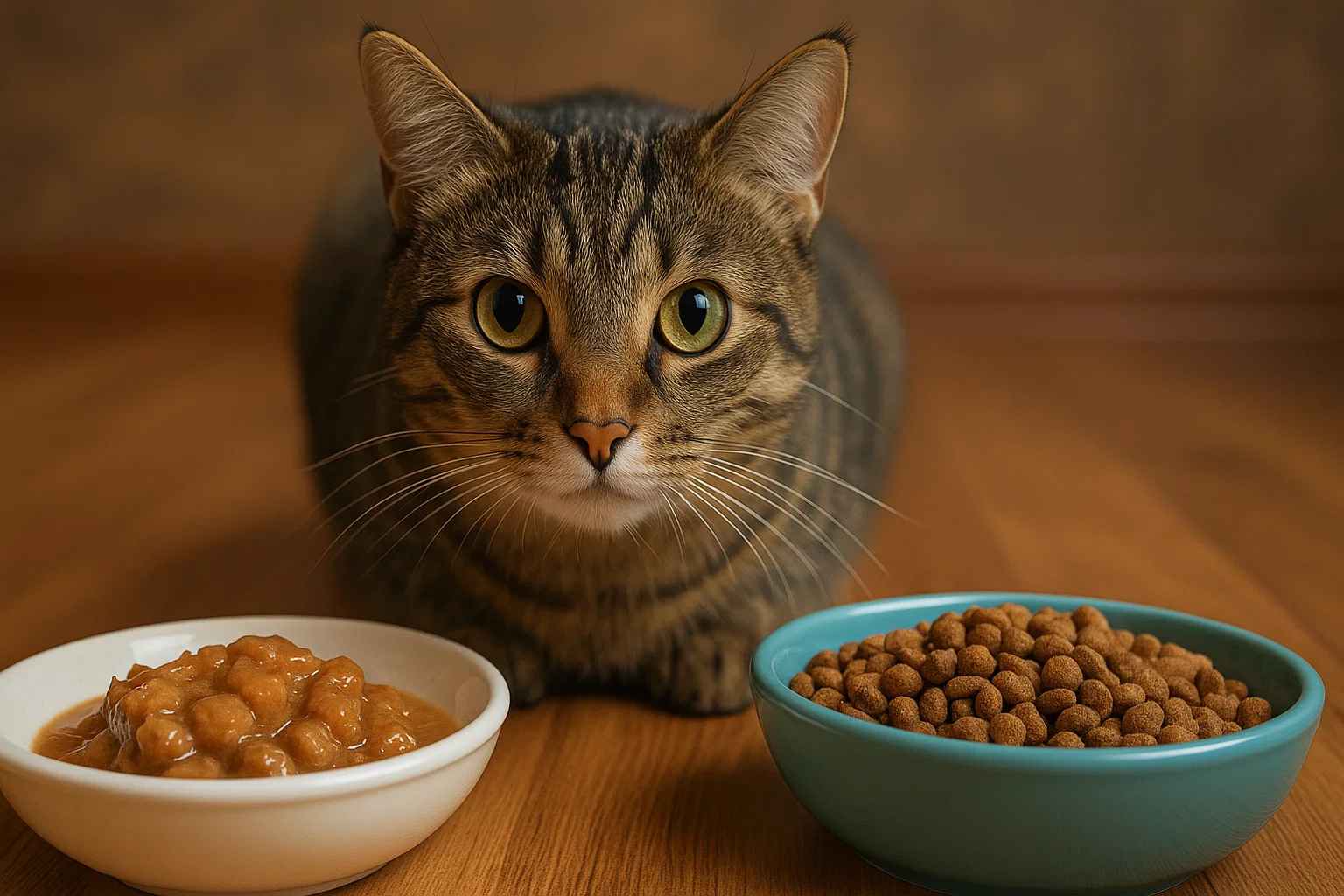Cats thrive when their diet matches their natural nutritional needs. Choosing between wet and dry food isn’t just about convenience—it affects hydration, dental health, digestion, and overall well-being. Understanding the differences, benefits, and drawbacks of each type can help ensure your feline friend enjoys a balanced, healthy diet for years to come.
1. Nutritional Composition Matters
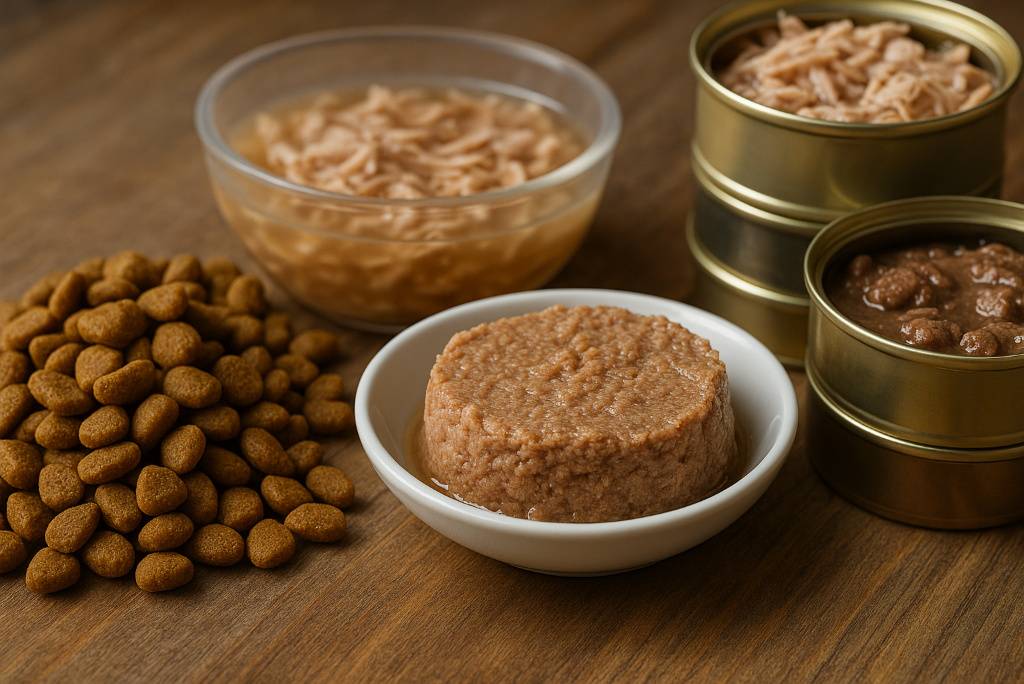
Wet and dry foods differ in macronutrient balance. Wet food often has higher protein and moisture, closely mimicking a cat’s natural prey diet. Dry kibble typically contains more carbohydrates and less moisture, which may not be ideal for obligate carnivores.
Always check the guaranteed analysis on the label for protein, fat, and fiber percentages, and verify the ingredients meet established standards. A balanced nutrient profile is essential for supporting healthy muscles, coat condition, immune function, and long-term energy needs in cats of all ages.
2. Hydration Benefits of Wet Food
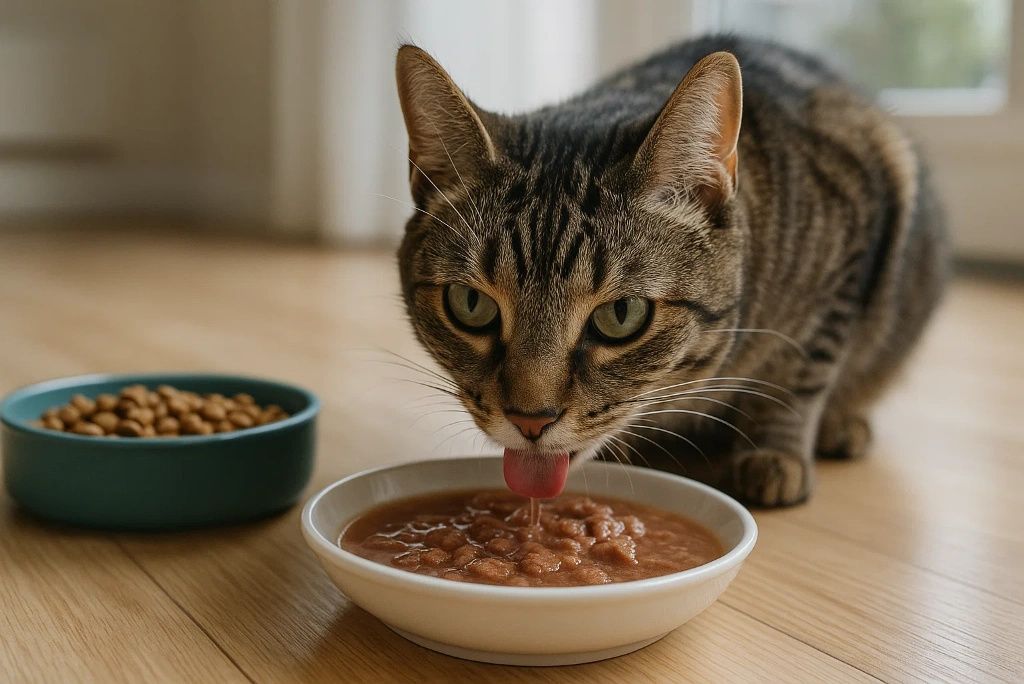
Cats naturally have a low thirst drive, so they rely heavily on their food for moisture. Wet food contains about 70–80% water, supporting urinary tract health and kidney function. This is especially important for cats prone to urinary crystals or kidney issues, where extra hydration can reduce risks. Increasing water intake through wet food also benefits older cats, who may drink less due to reduced activity. This can help prevent painful urinary blockages and maintain overall well-being. (Source)
3. Dental Health and Dry Food
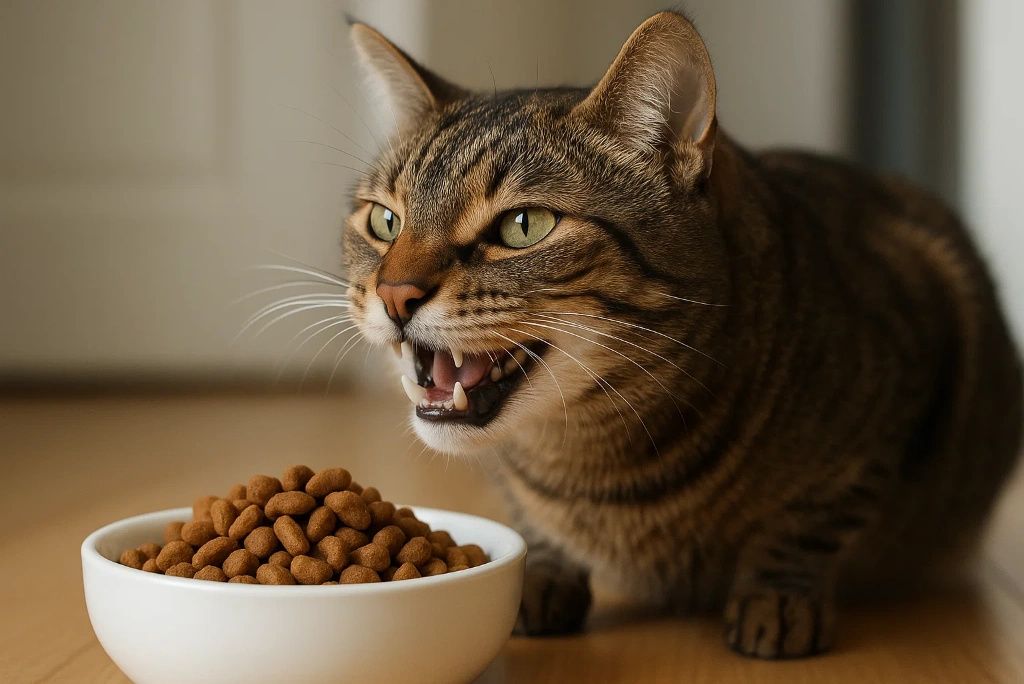
Dry food’s crunchy texture can help reduce tartar buildup, but it’s not a replacement for brushing. Some specialized kibble is designed to scrape plaque more effectively, but results vary. Studies show dental health benefits from dry food are modest unless paired with good oral hygiene and regular professional cleanings.
Offering dental treats, toys, or gels alongside kibble can further improve oral care. A comprehensive approach to dental health will help prevent gum disease and tooth loss over your cat’s lifetime. (Source)
4. Calorie Density and Weight Control
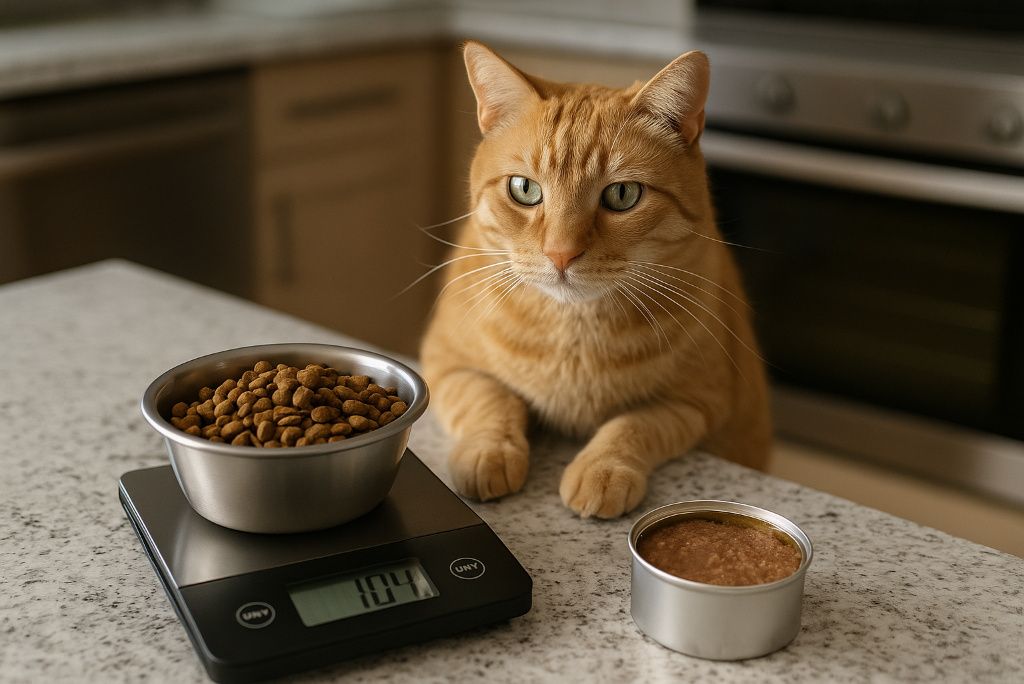
Dry food is calorie-dense, meaning cats can consume more calories in smaller portions without feeling as full. For overweight cats, controlled portions of wet food can aid weight management due to lower caloric density and higher satiety from water content. Over time, excessive calories from dry food can lead to obesity, diabetes, and joint problems. Monitoring portion sizes, choosing high-protein options, and encouraging daily activity are vital steps in maintaining a healthy body condition score. (Source)
5. Convenience and Storage

Dry food is easier to store, has a longer shelf life, and can be left out for free-feeding without spoiling quickly. Wet food requires refrigeration after opening and spoils within hours at room temperature, which can be challenging in warm climates. Consider your schedule, storage space, and feeding style before deciding. Some owners prefer using both types to balance convenience with nutrition, offering wet food at set mealtimes and leaving dry kibble available during the day for grazing.
6. Cost Considerations
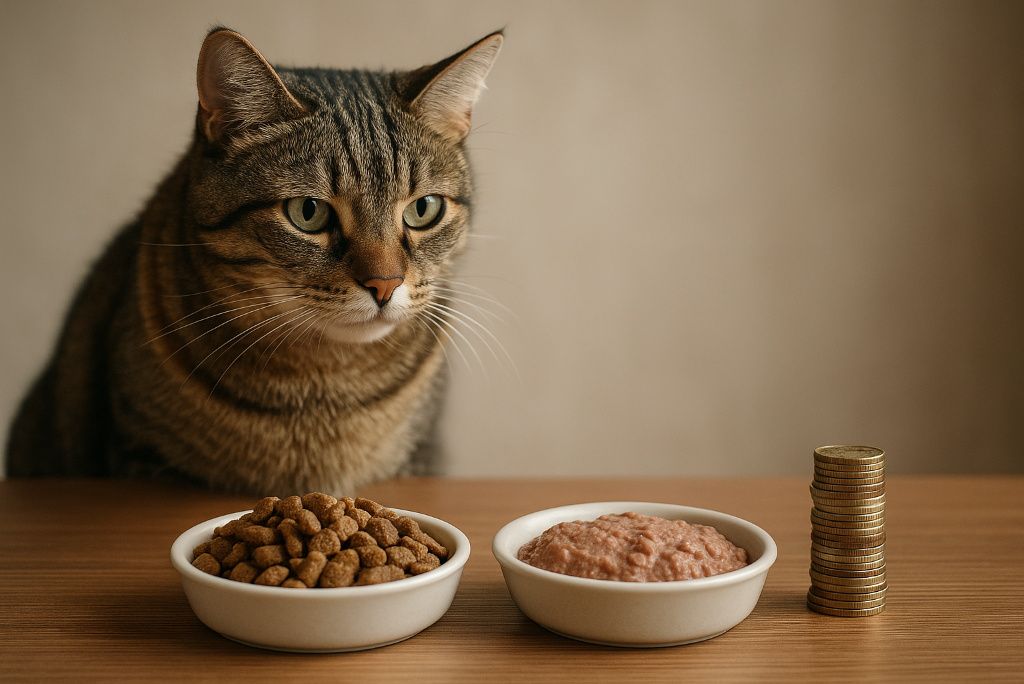
Dry food is generally more economical, especially for multi-cat households. Wet food tends to be pricier per serving, though it may save on future vet bills if it prevents urinary or kidney issues. While cost is important, long-term health outcomes can outweigh short-term savings.
Investing in higher-quality nutrition may reduce medical expenses later. Consider purchasing in bulk or during sales to balance affordability with quality, ensuring your cat receives consistent, nutrient-rich meals throughout their life.
7. Variety and Palatability
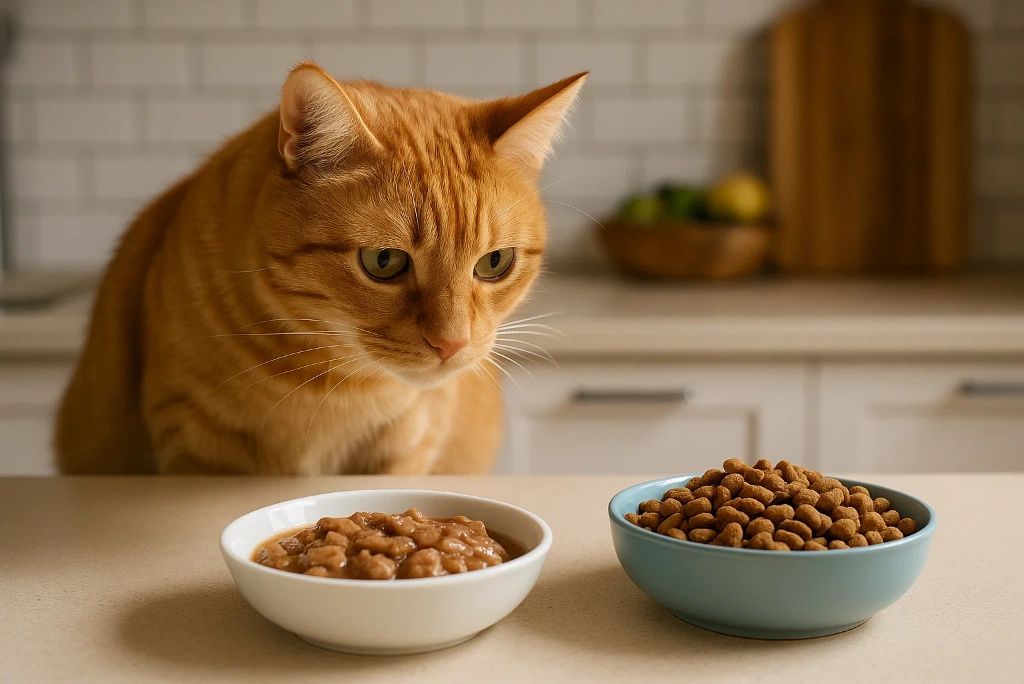
Cats can be picky eaters, and wet food often has a stronger aroma and flavor that appeals to finicky appetites. Introducing both wet and dry options early can prevent fussiness later in life. Offering variety also prevents boredom, which can lead to mealtime refusal. Rotating flavors and textures keeps meals interesting and ensures a broader nutrient intake. However, changes should be gradual to avoid stomach upset, especially in sensitive cats with delicate digestive systems.
8. Transitioning Between Food Types
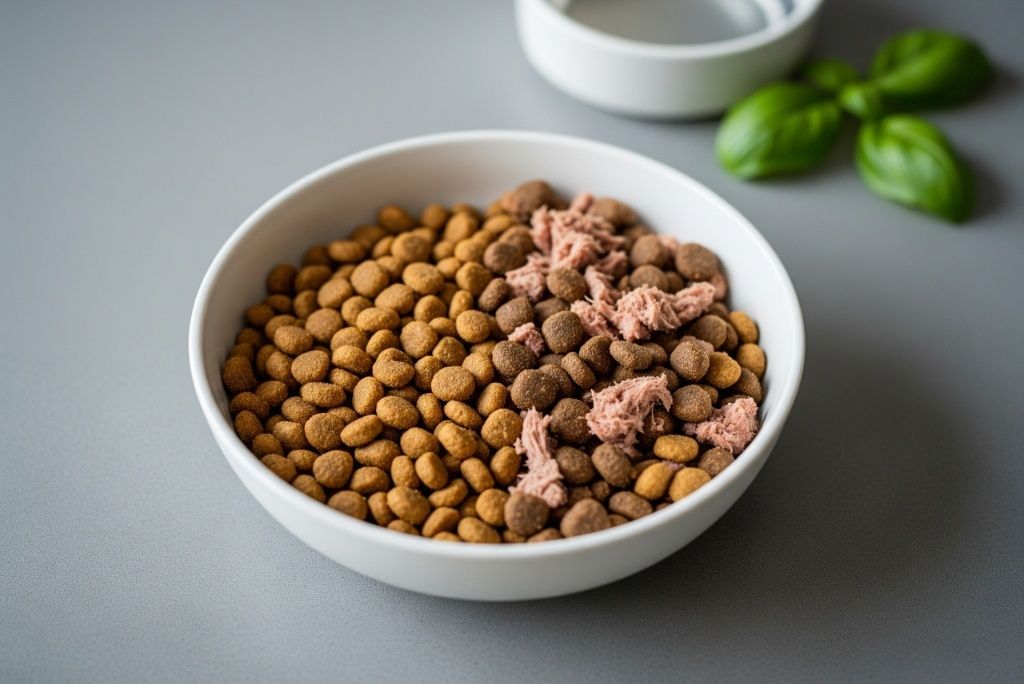
Switching food types should be gradual to prevent digestive upset. Mix small amounts of the new food into the old, increasing the proportion over 7–10 days. This slow change allows gut bacteria to adjust and reduces the risk of diarrhea or vomiting. Keep a close eye on stool consistency and overall behavior during transitions. If your cat shows signs of discomfort or refusal, slow down the process or consult a veterinarian for guidance.
9. Age and Life Stage Needs
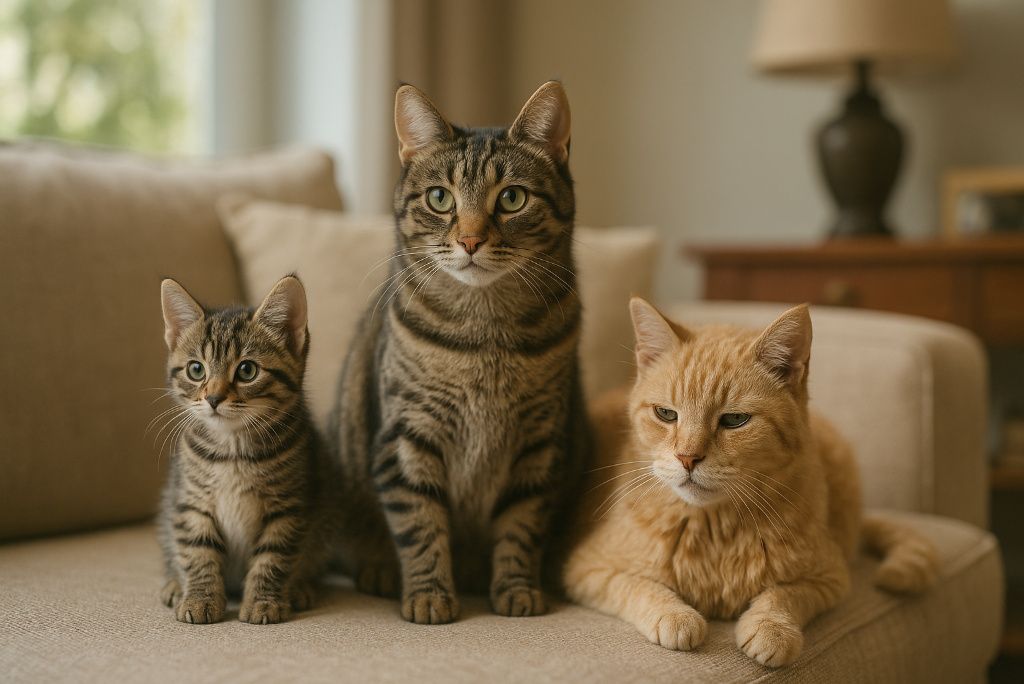
Kittens require more protein, fat, and calories for growth, which both wet and dry foods can provide. Senior cats may benefit from wet food’s softer texture and higher moisture for easier eating and hydration. Adult cats in their prime need a balance of nutrients to maintain energy, muscle tone, and a healthy immune system. Life-stage-appropriate diets ensure your cat gets the right nutrient levels at each phase for optimal long-term health and vitality.
10. Special Health Conditions
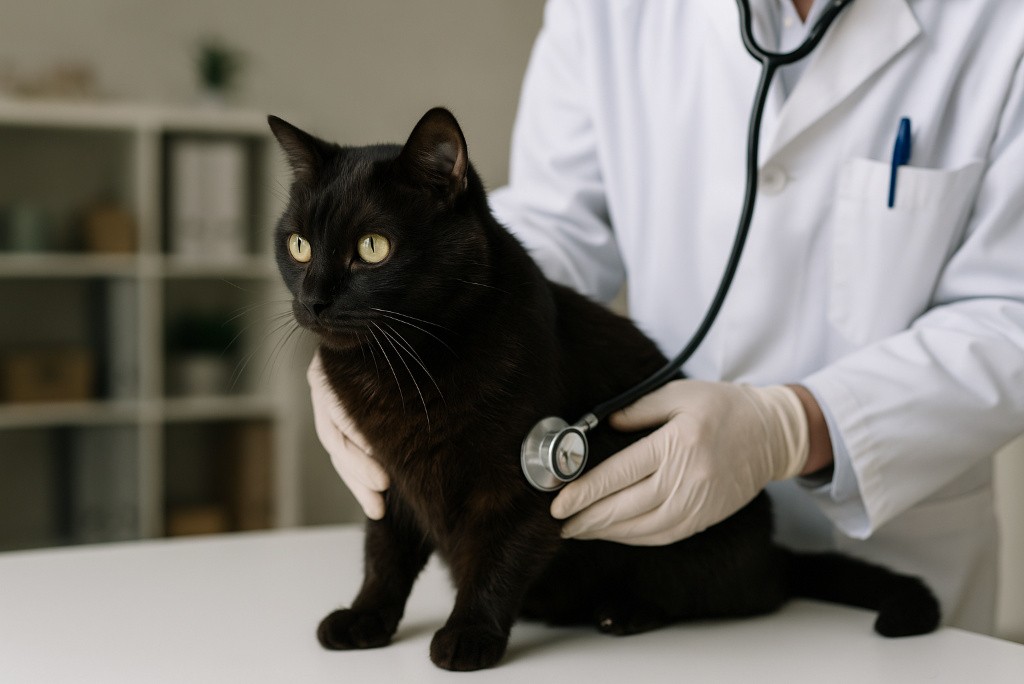
Cats with kidney disease, diabetes, or urinary tract issues often benefit from high-moisture wet food or prescription diets tailored to their condition. Always consult a vet before changing diets for health reasons. In some cases, therapeutic diets can slow disease progression or relieve symptoms.
Prescription formulas are carefully formulated with precise nutrient levels to address specific needs, so feeding regular over-the-counter food instead may be ineffective or even harmful for your cat’s health.
11. Balanced Diet Verification
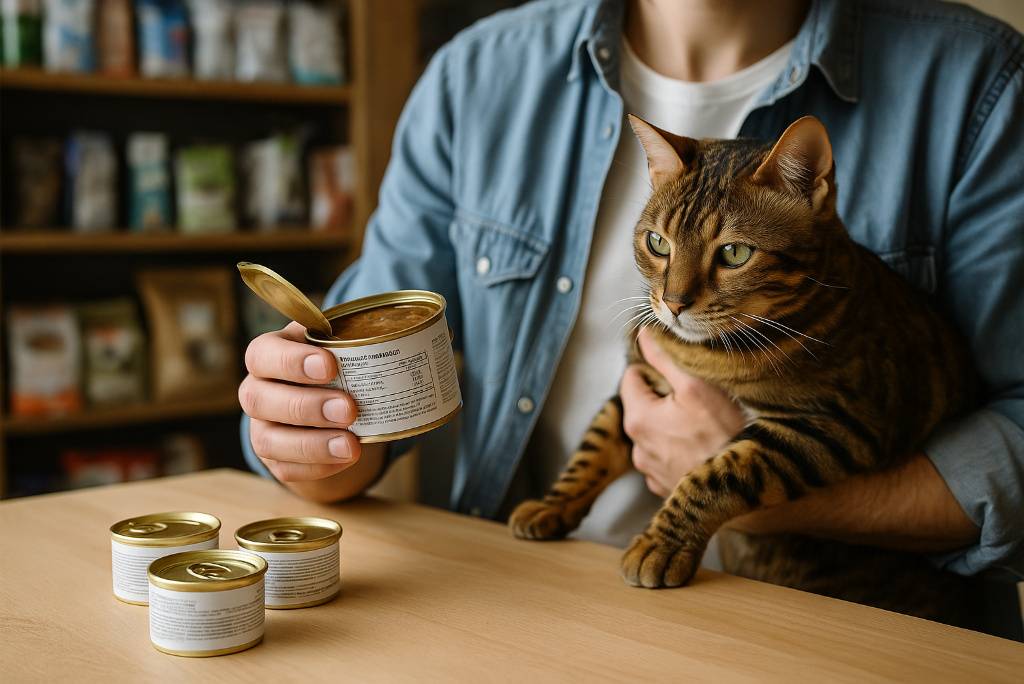
Ensure any food you choose is labeled as “complete and balanced” per AAFCO standards, meaning it meets essential nutrient requirements for your cat’s life stage. Avoid foods marked only as “supplemental” unless directed by a vet. A balanced diet supports everything from coat shine to organ function.
Without it, deficiencies or excesses can cause serious health issues over time, including heart problems, poor immunity, and bone weakness, making proper formulation essential for every cat’s long-term well-being.
12. Mixing Wet and Dry Food
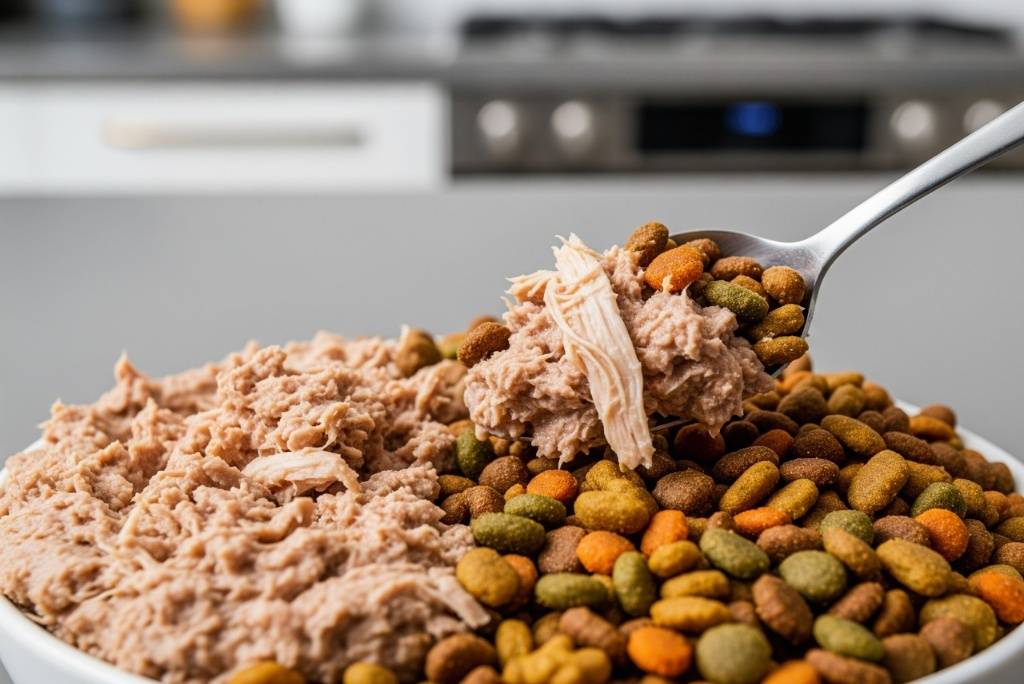
Many owners use a combination feeding approach—wet food for hydration and palatability, dry food for convenience and nibbling. This can provide nutritional balance and keep cats engaged at mealtimes. Mixing feeding methods also helps prevent dependency on one type of food, making dietary changes easier if needed later. It’s an excellent strategy for multi-cat households where individual preferences and nutritional needs vary significantly between cats of different ages or activity levels. (Source)
13. Portion Control and Feeding Schedule
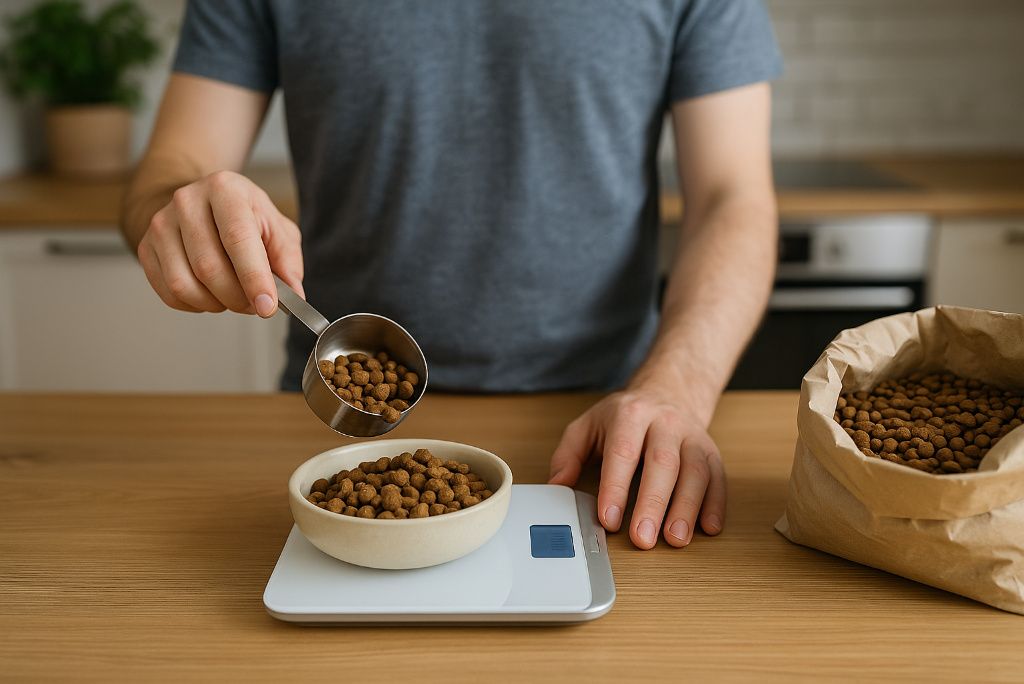
Overfeeding can lead to obesity, especially with calorie-dense dry food. Use a kitchen scale for accuracy and follow package guidelines, adjusting for your cat’s age, weight, and activity level. Scheduled mealtimes help regulate appetite and digestion, preventing constant grazing.
Dividing daily portions into two or three meals can also keep energy levels stable and reduce begging behavior. Consistency in feeding routines plays an important role in weight maintenance and overall behavioral balance.
14. Ingredient Quality Over Marketing
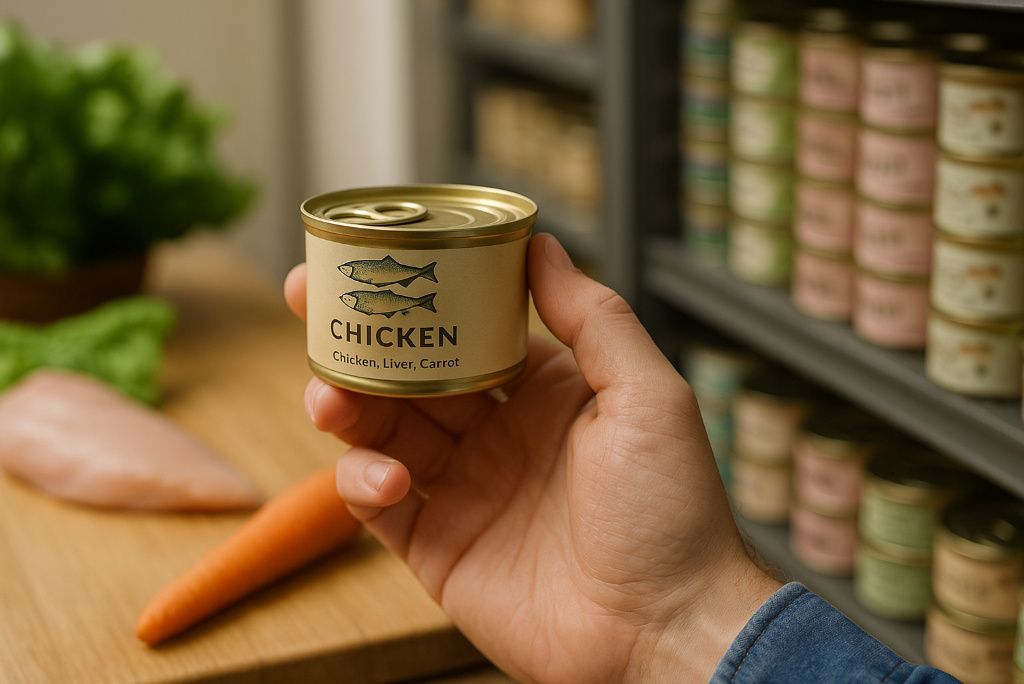
Look beyond flashy packaging. Prioritize named meat sources (e.g., “chicken” over “meat by-product”) and avoid unnecessary fillers, artificial colors, and excessive carbohydrates. Ingredient lists should start with high-quality proteins, followed by beneficial fats and digestible carbohydrates. Be wary of vague terms like “animal meal,” which can indicate lower-quality sources. A diet rich in premium ingredients supports digestion, energy, and immune health, contributing to a longer, happier life for your cat. (Source)
15. Regular Vet Checkups to Assess Diet
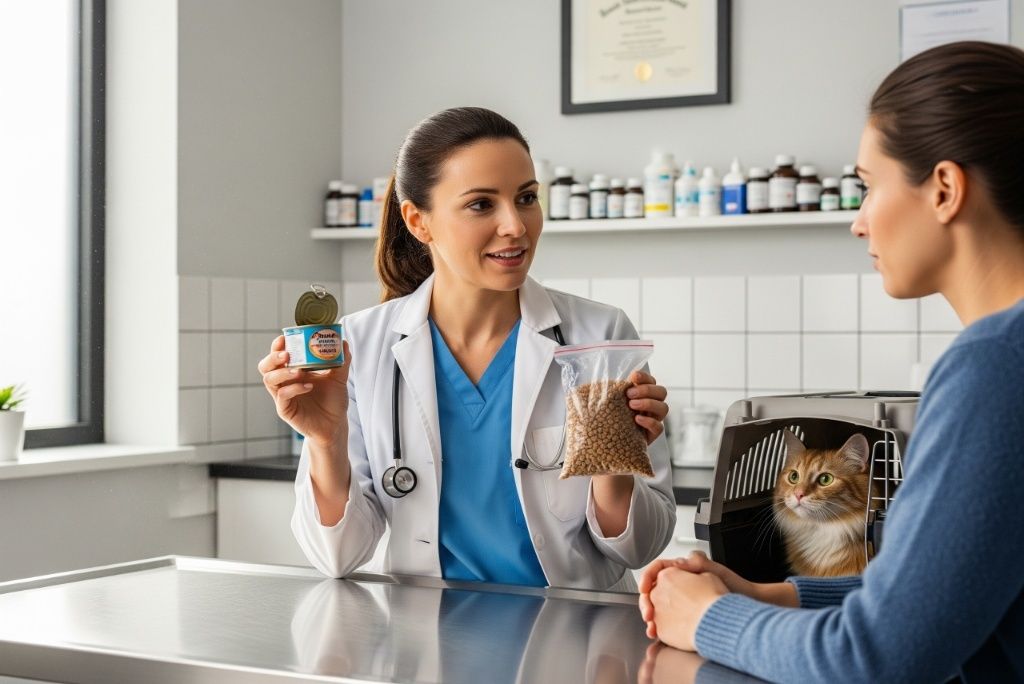
Annual (or biannual) vet visits can help monitor your cat’s weight, dental health, hydration status, and overall wellness, ensuring their diet continues to meet their needs as they age. Your vet can recommend adjustments based on changes in activity level, medical conditions, or nutrient requirements. Regular bloodwork can also detect early signs of diet-related issues, allowing for timely interventions that keep your cat healthy and thriving well into their senior years.
Disclaimer: This article provides general information and is not a substitute for professional veterinary advice. Always consult a qualified veterinarian before making significant dietary changes for your cat.

